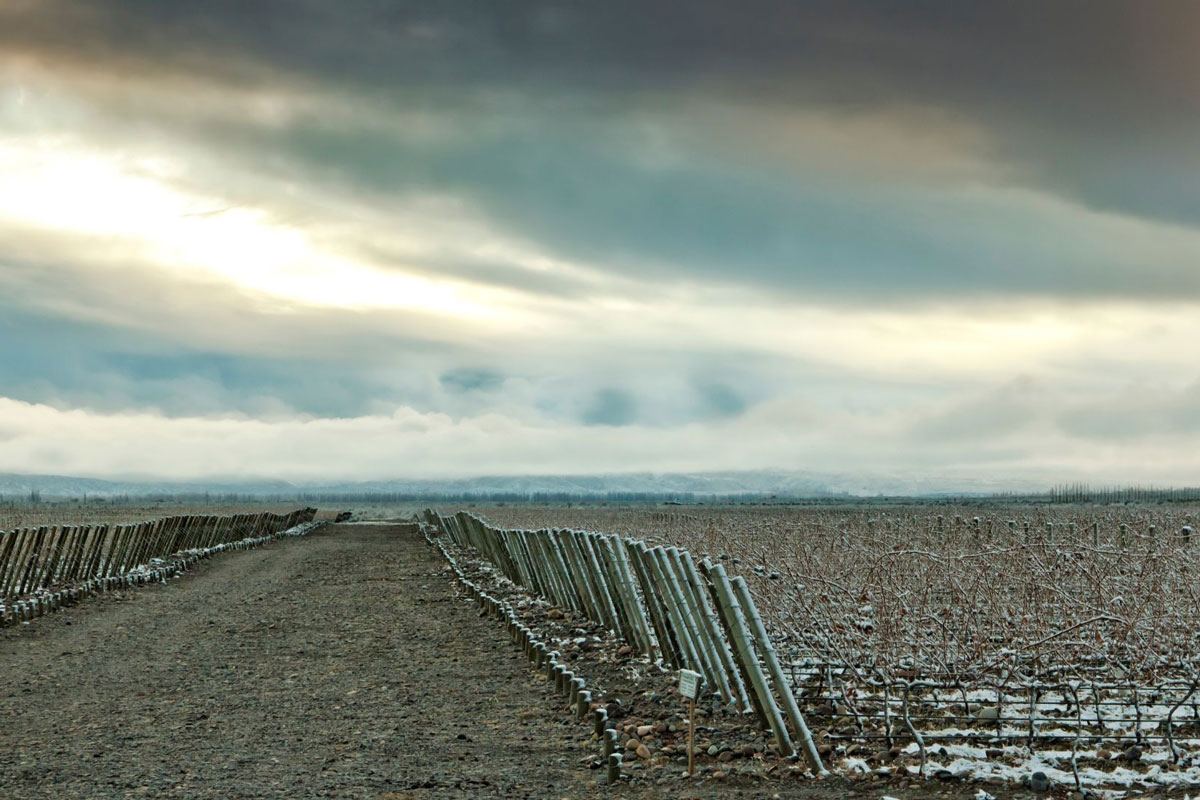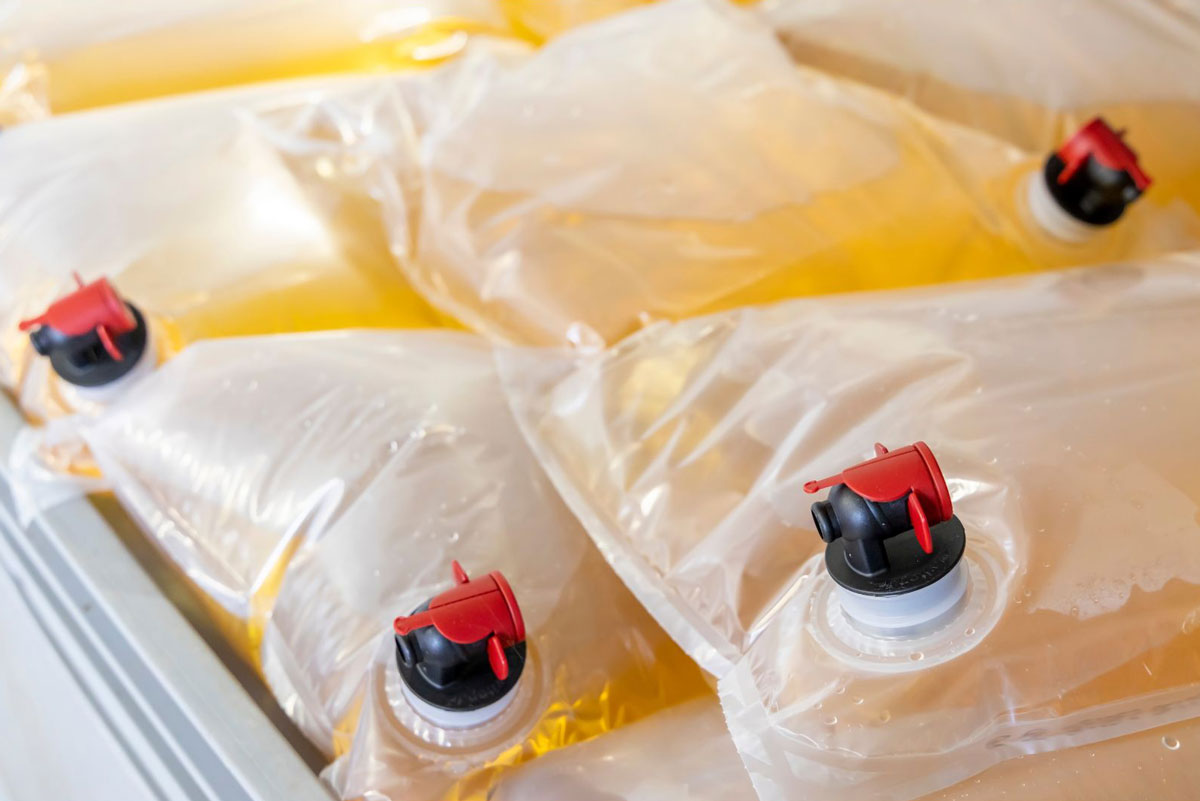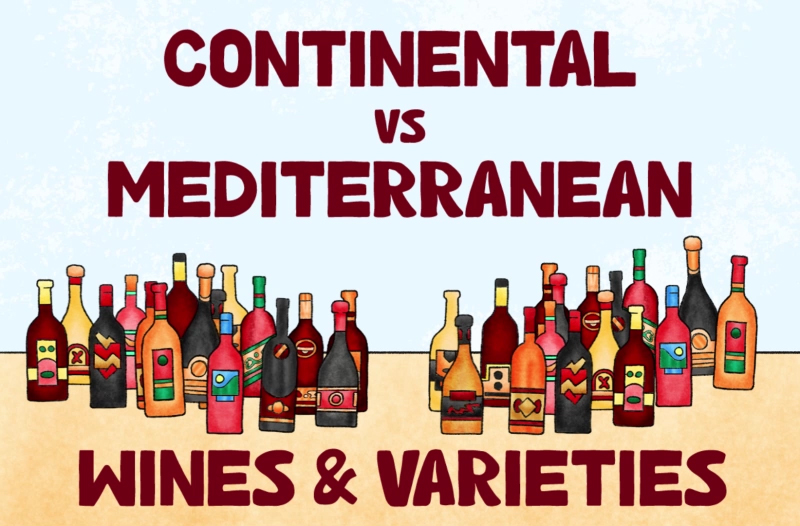Global Wine Trends
Wine trends in the wine industry today are shaping the way people consume and appreciate wine. Key emerging wine trends are expected to continue because they all follow the global trends that influence every human activity.
These 3 broader global trends impact society in every aspect, including wine culture:
- Climate change
- Digitalisation
- Health concerns
What are the Top Wine trends?
The global wine trends are indeed influenced by broader global trends that impact various aspects of human activity. Let’s delve deeper into each of these connections:
1. Climate Change and Emerging Terroirs
Climate change is altering the conditions in traditional wine regions, affecting grape ripening, vineyard management, and overall wine production. Rising temperatures and changing weather patterns are prompting winemakers to adapt. For example, seeking new terroirs to sustain the growth of grape varieties that were once challenging to cultivate in these areas. This has led to the emergence of previously untapped regions as viable wine-producing areas.
The top global concerns include more frequent and longer-lasting heat waves, too little or too much rain, and extreme weather events. These climatic changes directly affect the wine growing process, the grapes themselves, the composition of the wine and, as a result, its taste. Once prestigious vineyards are now suffering as they struggle to continue to produce their prized and much-acclaimed fruit.
Another example is that the environmental shifts are leading to early budding. This increases the risk of spring frost damage, while summer heatwaves make the grapes hibernate instead of ripening evenly. Equally, harvests start earlier year upon year, which causes the chemical composition of the grapes to become unbalanced to the point where their aromatics and complexities are significantly reduced.
Long-established wine-growing practices are adapting to new climate conditions, and that often means planting new positions for vineyards. For example, more and more of the northern-exposed plots of land in a vineyard are now being planted, but even that might not be enough to save the vines from further damage. Irrigation was only considered necessary for lesser positions, but it has now become imperative. Even new ways of growing grapes, previously abandoned by enologists, have suddenly been adopted. Small shifts have become not a mere question of style but survival.
In the face of changing environmental conditions, winemakers grapple with decisions that impact grape health and overall wine production. The question arises whether to allow leaves to provide shade for the grapes, risking potential disease development, or to remove the leaves entirely, risking overexposure to the sun. Another concern is the timing of leaf removal: should it be done earlier to allow grapes to adapt to increased sun exposure, or is it better to delay the process as much as possible?
Similarly, the presence of grass in rows poses yet another set of dilemmas. On the one hand, keeping the grass growing freely can aid in preserving biodiversity and contribute to cooler soil temperatures. However, this practice might also increase resource competition, potentially affecting grapevine health and productivity.
Other examples of adapting to climate change are cooler regions like England, parts of Canada, and some Northern European countries are now successfully producing wines that were once considered unthinkable due to climate constraints. These emerging terroirs are showcasing unique flavours and diversifying the global wine landscape, making it more resilient to the challenges posed by climate change.
As the environment continues to evolve and present new challenges, winemakers face many questions that demand careful consideration and adaptation. With each passing season, winemakers must address these evolving questions to stay abreast of the changing environmental dynamics and maintain the integrity of their vineyards and wine offerings.
2. Digitalization and E-commerce
Digitalisation has revolutionised various industries, and the wine sector is no exception. The rise of e-commerce and digital platforms has transformed how consumers discover, purchase, and experience wines. Online platforms provide consumers with a vast selection of wines worldwide, enabling them to explore new tastes and discover boutique wineries that might not have been easily accessible in traditional brick-and-mortar stores.
Moreover, digital marketing and social media have allowed wineries to connect more or less directly with their consumers, share their stories, and build brand loyalty. E-commerce has made it easier for wineries to reach a global audience, creating a more inclusive and interconnected wine community.
This trend expanded regardless of the Covid pandemic, but the pandemic accelerated the digital transition. It also accelerated the stagnation and decline of wine shopping in traditional retail stores and the growth of online wine store traffic.
3. Health Concerns and Alcohol-Free Wines
As health-consciousness rises, many consumers are seeking ways to reduce their alcohol consumption without compromising on taste and experience. Alcohol-free wines, which promise the sensory pleasure of wine without the intoxicating effects, cater to this growing demand.
Not every traditional wine lover is convinced in alcohol-free wine, to say the least. Regardless, this trend is growing and certainly hasn’t addressed all of its markets. The major concern is that there could be other “toxical” compounds in overprocessed wines rather than alcohol, which is answered with another approach regarding sustainability and laissez-faire wines.
Health-conscious consumers are therefore interested in wines made under organic practices and biodynamic philosophy. These wines are perceived as healthier choices since they are produced without synthetic chemicals in vineyards and the cellar and with a focus on sustainability and environmental stewardship. As the global trend towards healthier living gains momentum, natural wines and wines made through sustainable practices are becoming more popular.
4. Sustainability and Alternative Wine Containers
With growing environmental awareness, sustainability has become a significant focus in many industries, including wine production.
The ambition of this article is not to get involved in the legitimacy of associating carbon levels in the atmosphere with climate change. It is only to recognise the dominant widespread trend affecting the wine industry as well.
For example, consumers are seeking products with reduced carbon footprints, and the wine industry has responded with solutions like alternative wine containers.
Alternative containers, such as cans, bag-in-boxes, and pouches, are more lightweight and require less energy to produce and transport than traditional glass bottles. These containers are supposed to have a lower impact on recycling and waste management. In general perception, the move towards alternative packaging aligns with the broader global trend of reducing carbon output.
In Sweden, the customer is shown the Co2 values of the individual packages in the online store, and 0.75l bottles weighing more than 750g may no longer be imported.
In conclusion, the global wine trends mentioned earlier are indeed intertwined with broader global trends that impact various facets of human life. Climate change, digitalisation, and health concerns are shaping the wine industry, inspiring innovations and adaptations, and influencing consumer choices. As these global trends continue to evolve, the wine industry will likely adapt further to meet its consumers’ demands and values.
5 Key Global Wine Trends
This article delves into five key global wine trends shaping the industry’s future:
- Alcohol-free wines
- Alternative wine containers
- E-commerce
- “Natural” wine and sustainability
- Emerging of the new “terroirs”
1. Alcohol-Free Wines: A Sobering Success or a Marketing Gimmick
The rise of health-conscious consumers and the growing desire for moderation in alcohol consumption have given birth to a burgeoning trend – alcohol-free wines. Also known as non-alcoholic wines or de-alcoholised wines, these beverages promise to offer the delightful taste and complexity of traditional wines without the alcoholic content. Alcohol-free wines appeal to designated drivers, pregnant women and any abstainers, and those seeking a refreshing alternative for social occasions.
More and more wine producers are gaining traction with their range of higher-quality, alcohol-free wines, trying to prove that non-alcoholic options can compete in flavour.
It is disputable that these wines could be considered a healthier alternative simply because of the de-alcoholisation. However, having the alcohol removed from them presents a desirable alternative to an otherwise non-drinking audience and thus creates a whole new market.
It is safe to assume that alcohol-free wines will never appeal to traditional wine drinkers, but it is an equally safe assumption that this new market will only grow.
2. Alternative Wine Containers: Embracing Innovation or an Abomination
The traditional glass bottle is no longer the only vessel for wine, as alternative containers are taking centre stage in many markets. Cans, boxes, pouches, and even kegs have emerged as exciting alternatives, presenting convenience and portability while also reducing the wine industry’s carbon footprint.
Canned sparkling wine and bag-in-boxes, not only from newcomers but from established wineries, are no longer exceptions.
The reason is that these packaging innovations resonate well with the environmentally conscious younger generation and outdoor enthusiasts. Since carbon levels are advertised as a major cause of global warming and climate change, we are witnessing a massive shift in many consumer goods and services towards zero carbon emissions, on the surface level at least.
In some markets, “carbon footprint” is calculated and shown along with the price of every single product available.
That alone certainly won’t discourage the traditional winemakers already witnessing hardships in getting standardised glass bottles for preserving their wines. Wine corks are another issue, with many switching from increasingly more expensive and less reliable traditional cork to alternatives.
Traditional wine lovers will always choose good old, recyclable glass bottles to preserve their wine. But what if they run out of choices…
3. E-commerce: Uncorking the Online Wine Market
E-commerce has revolutionised how we shop for almost everything, and the wine industry is no exception. The convenience of purchasing wine online, coupled with access to a broader selection and competitive pricing, has fueled the growth of online wine sales. From small boutique wineries to established vineyards, players across the industry are establishing their virtual presence to cater to a wider audience.
Not too long ago, it was inconceivable for many to purchase wine without holding it in hand, reading the details on the label, and admiring its presence and appearance. Now, remote purchase of wines is common, and close to 70% of online purchases are made on a smartphone.
Online wine retailers offer an extensive range of wines, reviews, and personalised recommendations for their customers, not to mention customer support and fair policy.
With further development of technology, the opportunity for online sale of wine and especially e-commerce will expand. Online purchases of goods and services will also be facilitated based on the latest initiatives in governing structures.
4. “Natural” Wine and Sustainability: Sip with a Conscience
The demand for sustainable, eco-friendly, and ethically produced goods extends to the wine industry. As consumers become more environmentally conscious and/or concerned about their health or simply seek the most authentic expression of a certain wine culture, they seek wines made through organic practices or under biodynamic philosophy, with minimal intervention in the winemaking process.
Natural wine has gained significant traction in recent years, captivating discerning wine enthusiasts with its focus on minimal intervention and a return to traditional winemaking practices. Wines labelled as “bio,” “eco,” “organic,” “biodynamic,” and others find unconditional acceptance among dedicated followers of the natural wine movement. However, the exclusivity associated with this trend may seem off-putting to those who believe that “naturalness” alone does not guarantee the quality of a wine.
Nonetheless, the allure of natural wines shows no sign of fading away. As winemakers and consumers alike continue to explore and embrace sustainable and environmentally friendly approaches, the natural wine movement is bound to evolve and find new ways to appeal to a broader audience. This ongoing journey of discovery and innovation ensures that we haven’t seen the last of naturalists. As the wine world continues to evolve, natural wines are poised to remain an exciting and integral part of the ever-changing landscape, offering unique flavours and a deeper connection to winemaking.
What is perhaps the most annoying outcome of this trend is the appearance of falsely “natural” wines that do not embody characteristics of a dedicated naturalistic approach in winemaking. That shouldn’t surprise anyone because the standards and the very definition of natural wines are non-existent. Therefore, we can expect more and more wine-producing companies to misuse the already compromised naturalistic agenda for their own benefit.
5. Emerging of the New “Terroirs”
“Emerging of the New Terroirs” refers to the phenomenon in the wine industry where previously untapped or unconventional regions are now becoming viable and successful wine-producing areas. Traditionally, certain regions worldwide have been renowned for their exceptional wines due to factors such as climate, soil composition, and historical winemaking expertise. However, as climate change and changing environmental conditions impact these traditional wine regions, winemakers are exploring and embracing new terroirs.
Once considered unlikely wine-producing areas, more regions gain recognition for their exceptional wines, showcasing the potential of new terroirs.
The concept of “Emerging of the New Terroirs” showcases the resilience and adaptability of the wine industry in the face of climate change and evolving consumer preferences. As winemakers explore uncharted territories and discover new possibilities, wine enthusiasts can look forward to an ever-expanding array of wines with diverse flavours and stories, enriching the global wine landscape.
In conclusion, the global wine industry is experiencing a fascinating evolution, shaped by the convergence of consumer preferences, sustainability consciousness, and technological advancements. Embracing trends such as alcohol-free wines, alternative containers, e-commerce, “natural” wines, and the exploration of new terroirs, winemakers and consumers alike embark on a journey of transformation and discovery. As we savour the diversity of wines and the stories they hold, the industry must continue to adapt to its audience’s changing tastes and values while remaining committed to the principles of sustainability and innovation.
How big is the wine market?
To calculate the size of the global wine market, market researchers gather a wide range of data from various sources. The mathematics behind estimating the size of the wine market involves data collection, analysis, and projection. The data collected includes:
- Wine Production Data: Information on the total volume of wine produced worldwide is a crucial data point. This data is collected from official government agencies, industry reports, and wine-producing organisations.
- Wine Consumption Data: Data on wine consumption patterns in different regions and countries is essential. Market researchers collect this information from surveys, retail sales data, and trade associations.
- Sales and Revenue Data: Sales and revenue data from wine producers, distributors, and retailers are collected to understand the financial performance of the wine market.
- Pricing Data: Data on wine prices at different levels of the supply chain is gathered to calculate the total value of wine sales.
- Export and Import Data: Information on the volume and value of wine exports and imports between countries helps to understand the global trade dynamics of the wine market.
- Market Segmentation Data: The wine market is often segmented based on factors such as wine type, distribution channels, and geography. Data on the sales and consumption of different wine types (e.g., red, white, rosé), through various channels (e.g., retail, e-commerce, restaurants), and in different regions is collected for each segment.
- Economic Indicators: Market researchers also consider economic indicators such as GDP growth, consumer spending, and inflation rates, as these factors can influence wine consumption and pricing.
- Trends and Consumer Behavior Data: Data on emerging trends, consumer preferences, and purchasing behaviour are critical to understanding the changing dynamics of the wine market.
- Industry Reports and Surveys: Researchers refer to industry-specific reports and surveys conducted by market research firms, trade associations, and government agencies to gain insights into market trends and developments.
- Secondary Research: Apart from primary data collection, researchers also refer to secondary sources such as academic papers, articles, and historical market data to provide context and validate their findings.
Once the data is gathered, market researchers use statistical analysis, forecasting models, and other methodologies to estimate the size of the global wine market. Due to the dynamic nature of the wine industry, market size estimates are regularly updated to reflect the latest trends and developments.
Based on the Report from Benchmark International, and according to Statista report, the global wine market in 2023 is valued at $333 billion and is expected to grow annually at a compound annual growth rate (CAGR) of 5.2% (or 5.52%) between now and 2027
Conclusion
The wine industry is experiencing several global trends that are shaping its evolution.
These trends reflect changing consumer preferences, technological advancements, and a growing emphasis on our perception of sustainability in the wine industry. As the wine world evolves, winemakers and consumers embrace these trends, shaping the present and the future of global wine production and consumption.
We must be careful, though, because the old ways may be proven more environmentally friendly and healthier from the new practices. In future, if not already in some countries, there is additional pressure through taxes and other regulations on traditional producers. And what is today an alternative in terms of wine packaging and the whole industry soon might become obligatory.
While seemingly noble efforts to run our society sustainably may look justified, one day we might ask ourselves what exactly we have been sustaining by trying to achieve sustainability.
















